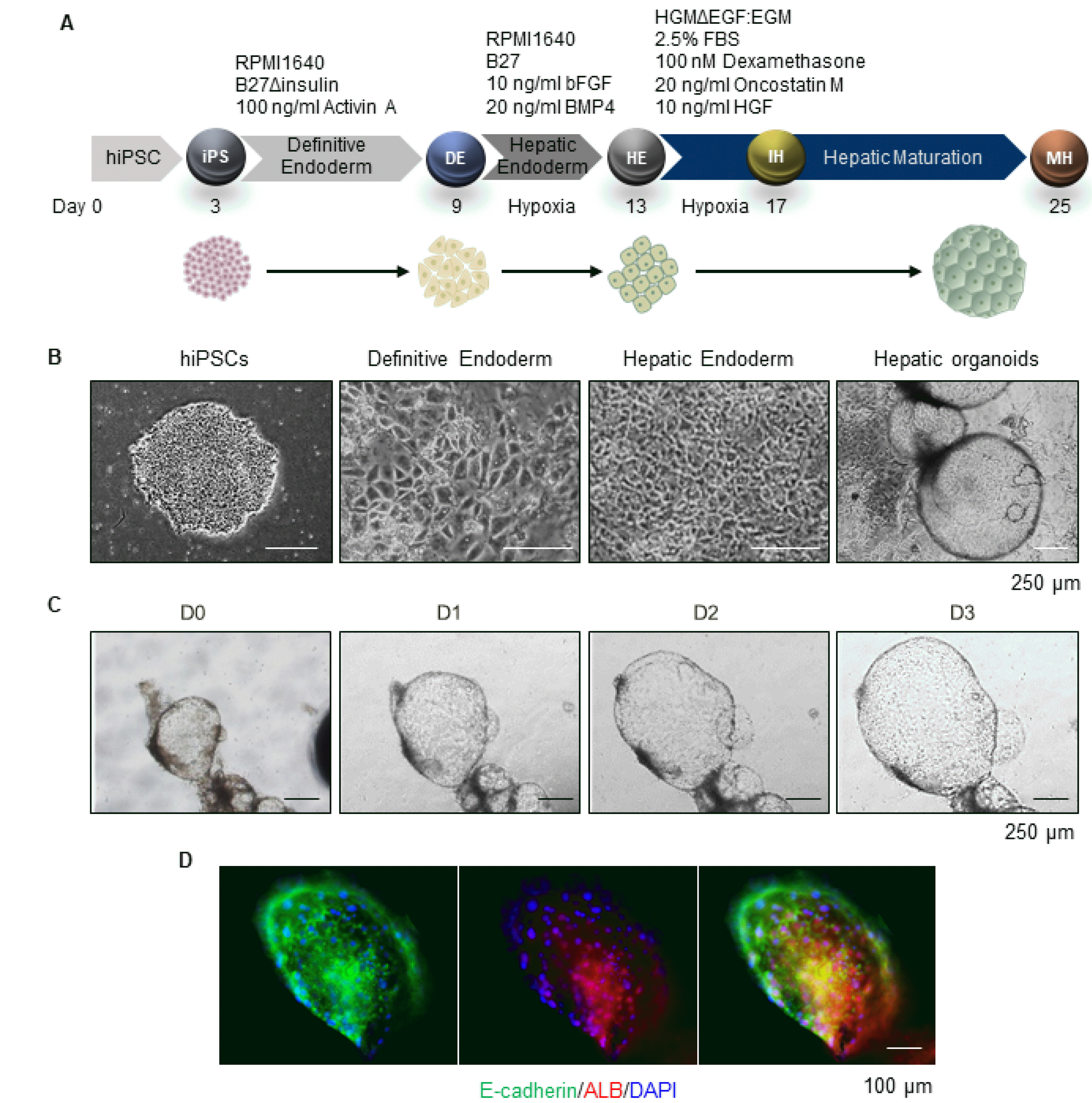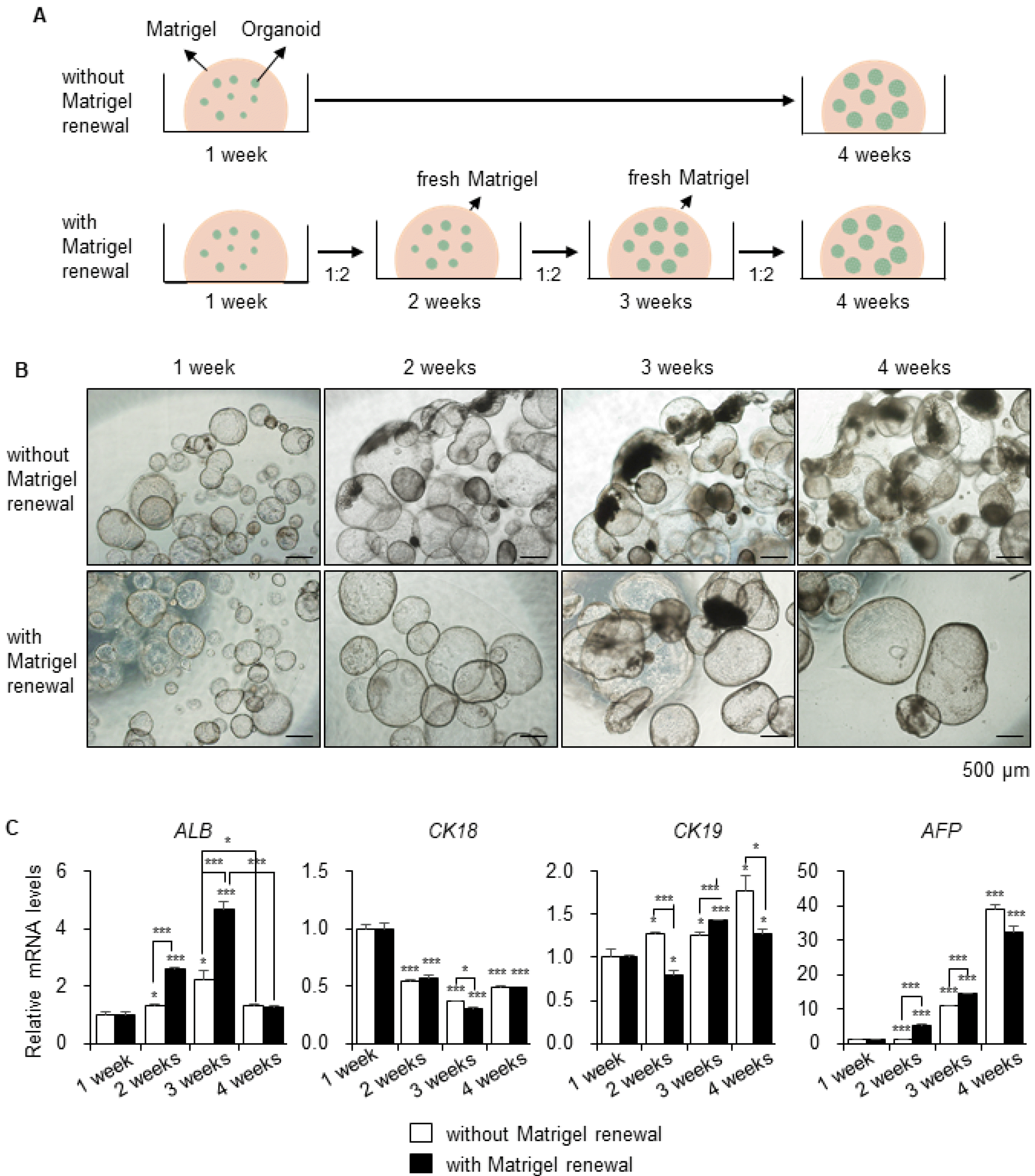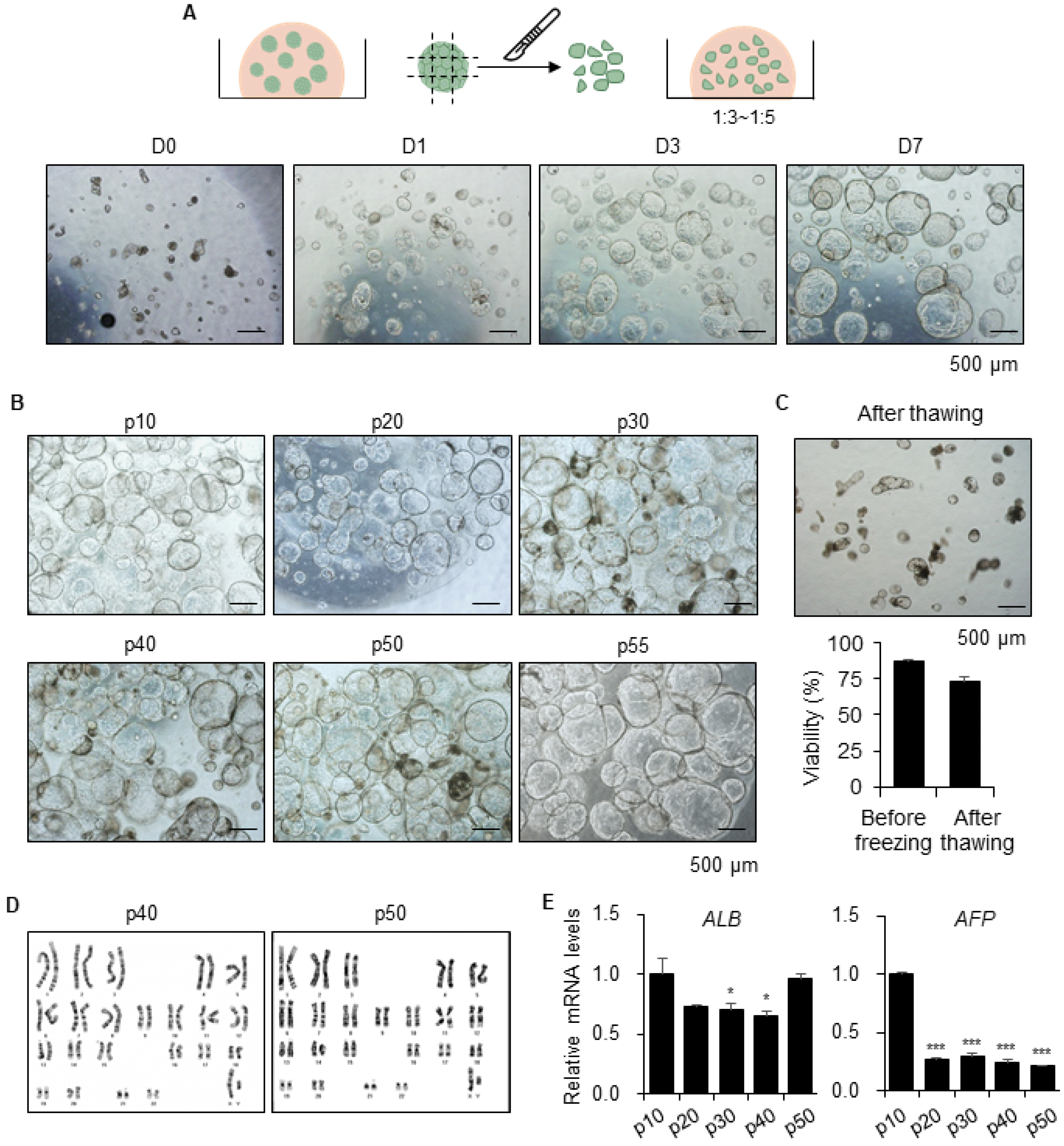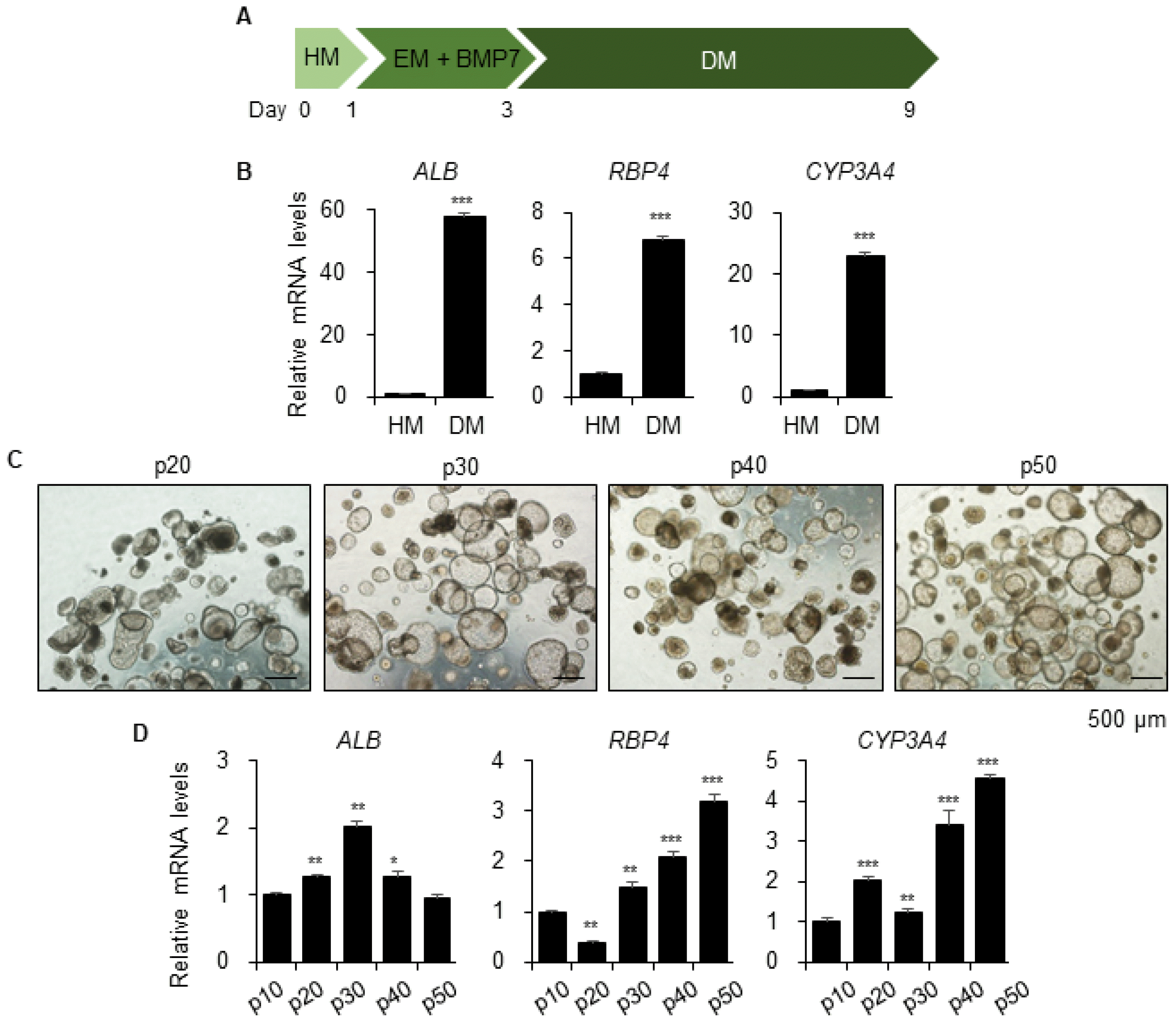2. Yamaguchi T, Matsuzaki J, Katsuda T, Saito Y, Saito H, Ochiya T. 2019; Generation of functional human hepatocytes in vitro: current status and future prospects. Inflamm Regen. 39:13. DOI:
10.1186/s41232-019-0102-4. PMID:
31308858. PMCID:
PMC6604181.

3. Underhill GH, Khetani SR. 2017; Bioengineered liver models for drug testing and cell differentiation studies. Cell Mol Gastroenterol Hepatol. 5:426–439.e1. DOI:
10.1016/j.jcmgh.2017.11.012. PMID:
29675458. PMCID:
PMC5904032.

4. Clark M, Steger-Hartmann T. 2018; A big data approach to the concordance of the toxicity of pharmaceuticals in animals and humans. Regul Toxicol Pharmacol. 96:94–105. DOI:
10.1016/j.yrtph.2018.04.018. PMID:
29730448.

5. Huang P, Zhang L, Gao Y, He Z, Yao D, Wu Z, Cen J, Chen X, Liu C, Hu Y, Lai D, Hu Z, Chen L, Zhang Y, Cheng X, Ma X, Pan G, Wang X, Hui L. 2014; Direct reprogramming of human fibroblasts to functional and expandable hepatocytes. Cell Stem Cell. 14:370–384. DOI:
10.1016/j.stem.2014.01.003. PMID:
24582927.

6. Kim Y, Kang K, Lee SB, Seo D, Yoon S, Kim SJ, Jang K, Jung YK, Lee KG, Factor VM, Jeong J, Choi D. 2019; Small molecule-mediated reprogramming of human hepatocytes into bipotent progenitor cells. J Hepatol. 70:97–107. DOI:
10.1016/j.jhep.2018.09.007. PMID:
30240598.

7. Touboul T, Hannan NR, Corbineau S, Martinez A, Martinet C, Branchereau S, Mainot S, Strick-Marchand H, Pedersen R, Di Santo J, Weber A, Vallier L. 2010; Generation of functional hepatocytes from human embryonic stem cells under chemically defined conditions that recapitulate liver development. Hepatology. 51:1754–1765. DOI:
10.1002/hep.23506. PMID:
20301097.

8. Si-Tayeb K, Noto FK, Nagaoka M, Li J, Battle MA, Duris C, North PE, Dalton S, Duncan SA. 2010; Highly efficient generation of human hepatocyte-like cells from induced pluripotent stem cells. Hepatology. 51:297–305. DOI:
10.1002/hep.23354. PMID:
19998274. PMCID:
PMC2946078.

9. Sharma A, Sances S, Workman MJ, Svendsen CN. 2020; Multi-lineage human iPSC-derived platforms for disease modeling and drug discovery. Cell Stem Cell. 26:309–329. DOI:
10.1016/j.stem.2020.02.011. PMID:
32142662.

10. Liu C, Oikonomopoulos A, Sayed N, Wu JC. 2018; Modeling human diseases with induced pluripotent stem cells: from 2D to 3D and beyond. Development. 145:dev156166. DOI:
10.1242/dev.156166. PMID:
29519889. PMCID:
PMC5868991.

11. Fowler JL, Ang LT, Loh KM. 2020; A critical look: challenges in differentiating human pluripotent stem cells into desired cell types and organoids. Wiley Interdiscip Rev Dev Biol. 9:e368. DOI:
10.1002/wdev.368. PMID:
31746148.

13. Kuse Y, Taniguchi H. 2019; Present and future perspectives of using human-induced pluripotent stem cells and organoid against liver failure. Cell Transplant. 28(1 Suppl):160S–165S. DOI:
10.1177/0963689719888459. PMID:
31838891. PMCID:
PMC7016460.

14. Li M, Izpisua Belmonte JC. 2019; Organoids - preclinical models of human disease. N Engl J Med. 380:569–579. DOI:
10.1056/NEJMra1806175. PMID:
30726695.

16. Hu H, Gehart H, Artegiani B, LÖpez-Iglesias C, Dekkers F, Basak O, van Es J, Chuva de Sousa Lopes SM, Begthel H, Korving J, van den Born M, Zou C, Quirk C, Chiriboga L, Rice CM, Ma S, Rios A, Peters PJ, de Jong YP, Clevers H. 2018; Long-term expansion of functional mouse and human hepatocytes as 3D organoids. Cell. 175:1591–1606.e19. DOI:
10.1016/j.cell.2018.11.013. PMID:
30500538.

17. Huch M, Gehart H, van Boxtel R, Hamer K, Blokzijl F, Verstegen MM, Ellis E, van Wenum M, Fuchs SA, de Ligt J, van de Wetering M, Sasaki N, Boers SJ, Kemperman H, de Jonge J, Ijzermans JN, Nieuwenhuis EE, Hoekstra R, Strom S, Vries RR, van der Laan LJ, Cuppen E, Clevers H. 2015; Long-term culture of genome-stable bipotent stem cells from adult human liver. Cell. 160:299–312. DOI:
10.1016/j.cell.2014.11.050. PMID:
25533785. PMCID:
PMC4313365.

18. Takebe T, Sekine K, Enomura M, Koike H, Kimura M, Ogaeri T, Zhang RR, Ueno Y, Zheng YW, Koike N, Aoyama S, Adachi Y, Taniguchi H. 2013; Vascularized and functional human liver from an iPSC-derived organ bud transplant. Nature. 499:481–484. DOI:
10.1038/nature12271. PMID:
23823721.

19. Akbari S, Sevinç GG, Ersoy N, Basak O, Kaplan K, Sevinç K, Ozel E, Sengun B, Enustun E, Ozcimen B, Bagriyanik A, Arslan N, Önder TT, Erdal E. 2019; Robust, long-term culture of endoderm-derived hepatic organoids for disease modeling. Stem Cell Reports. 13:627–641. DOI:
10.1016/j.stemcr.2019.08.007. PMID:
31522975. PMCID:
PMC6829764.

20. Wu F, Wu D, Ren Y, Huang Y, Feng B, Zhao N, Zhang T, Chen X, Chen S, Xu A. 2019; Generation of hepatobiliary organoids from human induced pluripotent stem cells. J Hepatol. 70:1145–1158. DOI:
10.1016/j.jhep.2018.12.028. PMID:
30630011.

21. Mun SJ, Ryu JS, Lee MO, Son YS, Oh SJ, Cho HS, Son MY, Kim DS, Kim SJ, Yoo HJ, Lee HJ, Kim J, Jung CR, Chung KS, Son MJ. 2019; Generation of expandable human pluripotent stem cell-derived hepatocyte-like liver organoids. J Hepatol. 71:970–985. DOI:
10.1016/j.jhep.2019.06.030. PMID:
31299272.

23. Holloway EM, Capeling MM, Spence JR. 2019; Biologically inspired approaches to enhance human organoid complexity. Development. 146:dev166173. DOI:
10.1242/dev.166173. PMID:
30992275. PMCID:
PMC6503984.

24. Workman MJ, Mahe MM, Trisno S, Poling HM, Watson CL, Sundaram N, Chang CF, Schiesser J, Aubert P, Stanley EG, Elefanty AG, Miyaoka Y, Mandegar MA, Conklin BR, Neunlist M, Brugmann SA, Helmrath MA, Wells JM. 2017; Engineered human pluripotent-stem-cell-derived intestinal tissues with a functional enteric nervous system. Nat Med. 23:49–59. DOI:
10.1038/nm.4233. PMID:
27869805. PMCID:
PMC5562951.

25. Quadrato G, Nguyen T, Macosko EZ, Sherwood JL, Min Yang S, Berger DR, Maria N, Scholvin J, Goldman M, Kinney JP, Boyden ES, Lichtman JW, Williams ZM, McCarroll SA, Arlotta P. 2017; Cell diversity and network dynamics in photosensitive human brain organoids. Nature. 545:48–53. DOI:
10.1038/nature22047. PMID:
28445462. PMCID:
PMC5659341.









 PDF
PDF Citation
Citation Print
Print


 XML Download
XML Download